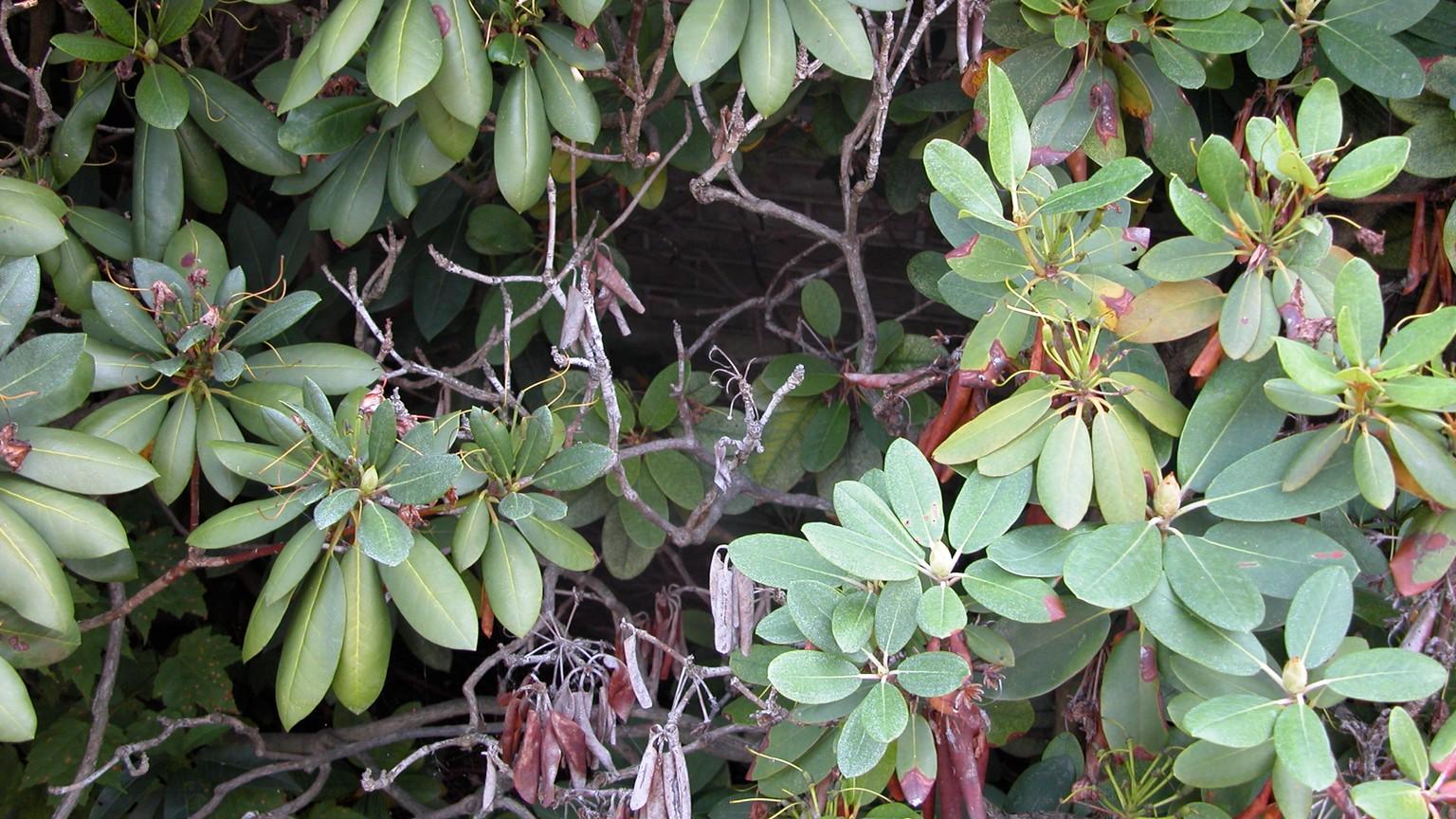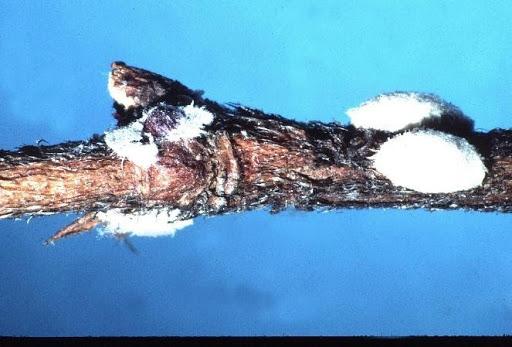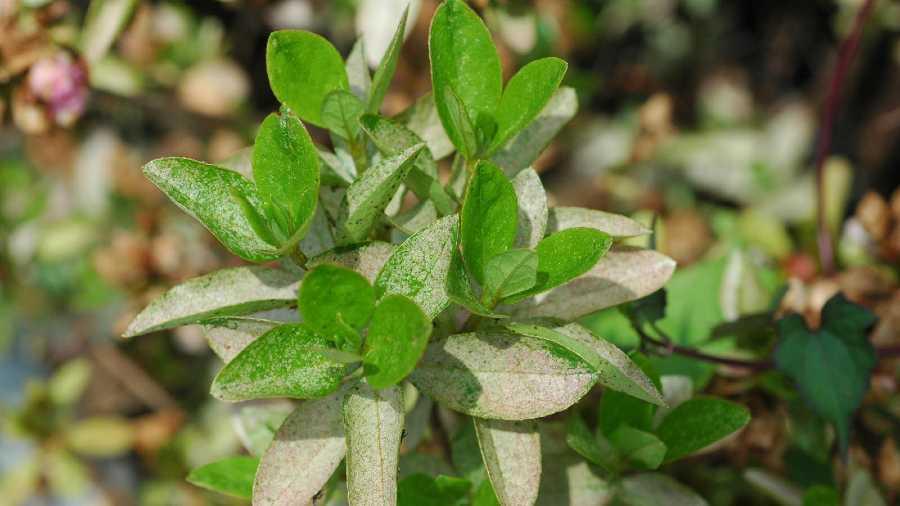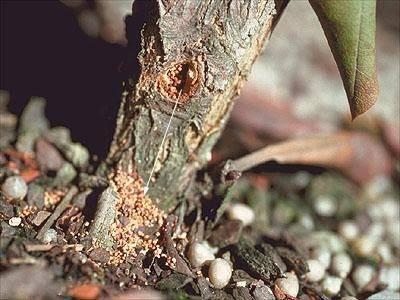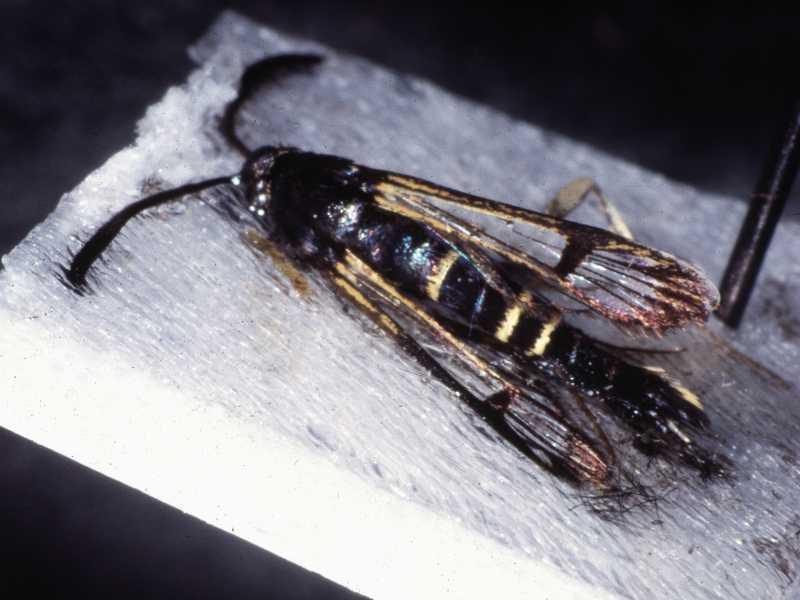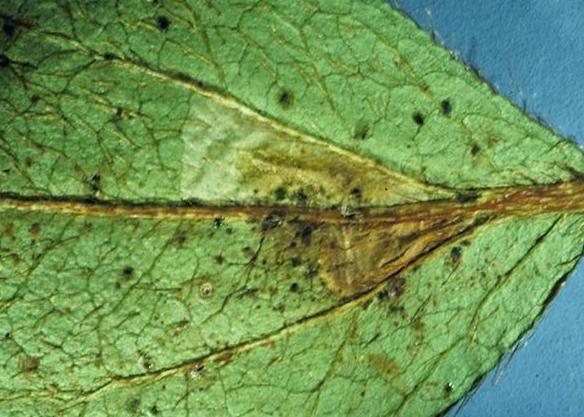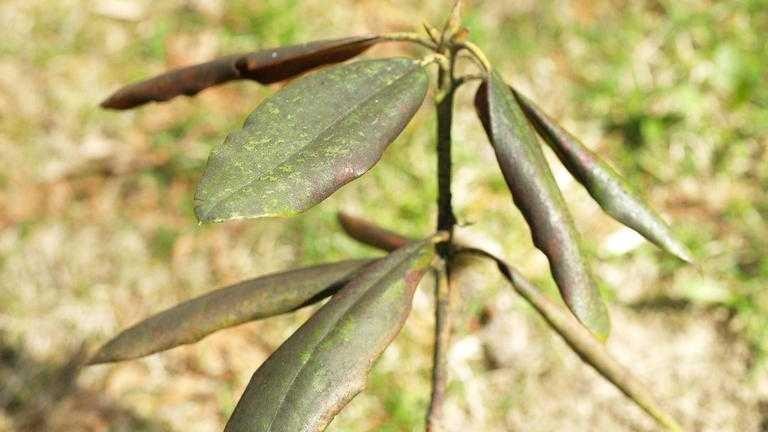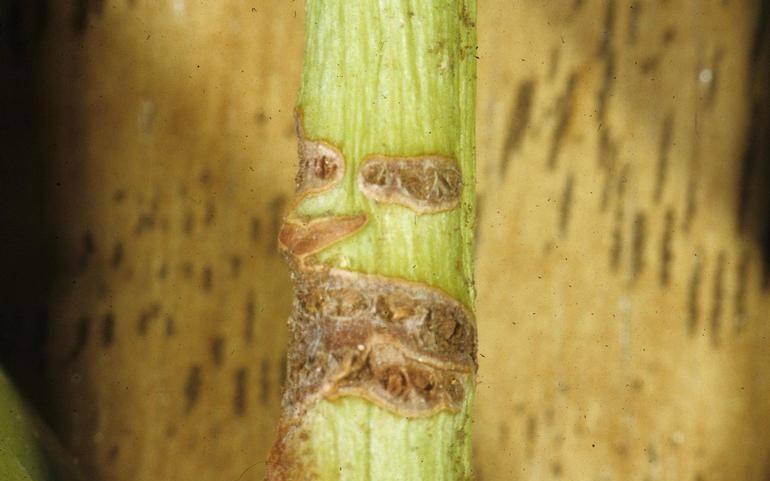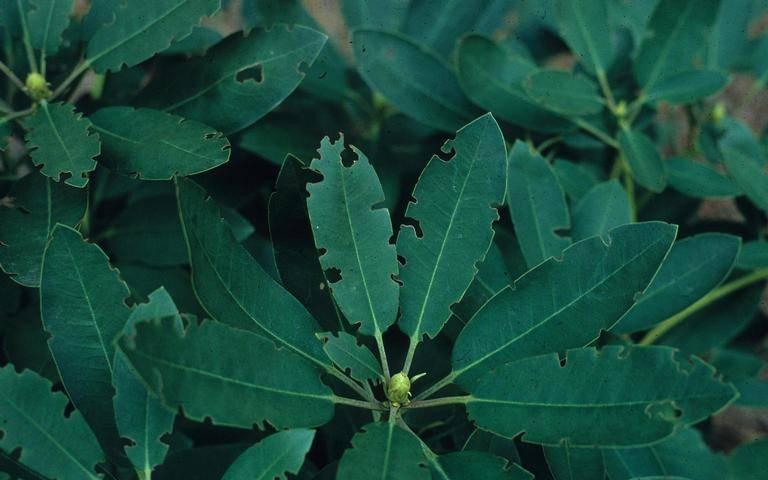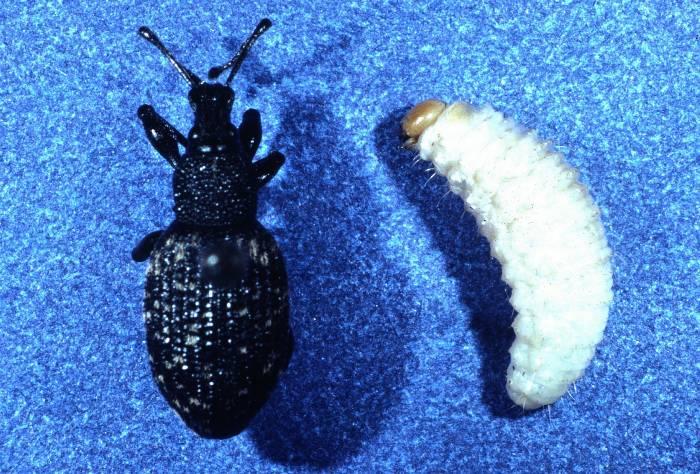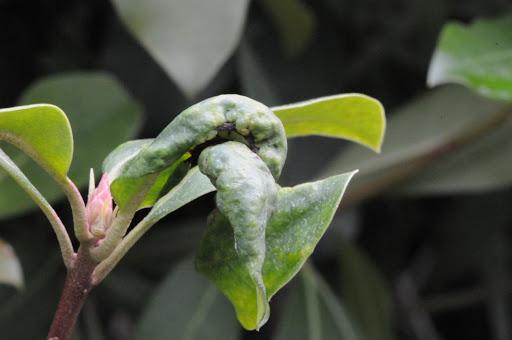Chlorosis symptoms, caused by a deficiency of iron, appear as yellow leaves with prominent green veins. These symptoms are usually caused by high soil pH.
A soil test can determine if the pH is too high. Iron is most readily available in acidic soils between pH 4.5-6.0. When the soil pH is above 6.5, iron may be present in adequate amounts but is in an unusable form due to an excessive amount of calcium carbonate. This can occur when plants are placed too close to cement foundations or walkways.
Soil amendments that acidify the soil, such as iron sulfate or sulfur, are the best long-term solution. Some fertilizers such as ammonium sulfate will also acidify the soil. Foliar sprays of iron sulfate or chelated iron can reduce symptoms.
Aluminum sulfate, which is a form of sulfur labeled to lower the pH for hydrangeas to turn the flowers blue, should not be used to lower the pH of the soil for azaleas or rhododdenrons. They can be sensitive to aluminum buildup in the soil.
Chlorosis caused by magnesium deficiency is initially the same as iron but progresses to form reddish-purple blotches and marginal leaf necrosis (browning of leaf edges). Epsom salts are a good source of supplemental magnesium.
Other causes of chlorosis include poor root growth, root rot, root damage caused by over-fertilization or excessive deep cultivation, soil nematodes, and poor drainage.



